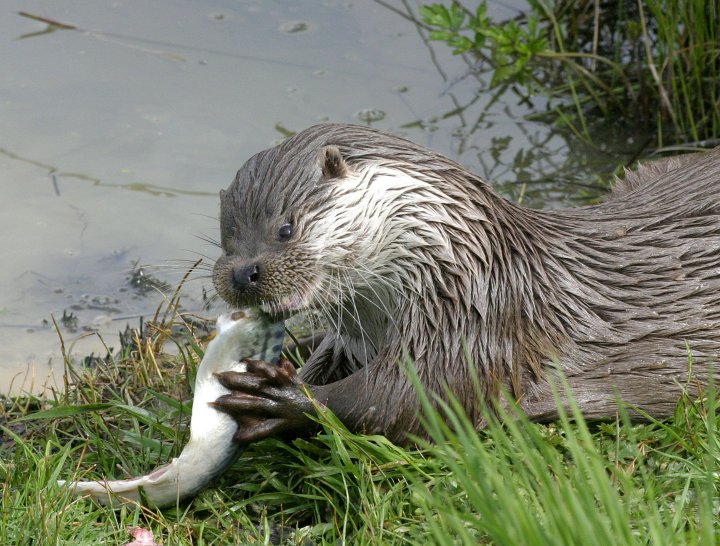Mink or otter?
Both mink and otter are present on the reserve and in the past we have had people sighting one and being convinced it was the other. Both animals are part of the Mustilidae family which also includes badgers, stoats and weasels, though they belong to different subfamilies. Though they both live around water, eat similar foods and could be mistaken for the other at a distance there are various features that set them apart. This week I will go over the differences between these two water dwelling mammals.

Otters (Lutra lutra) have brown coats and can vary in size from 57 to 95 cm long, plus a tail of 35–45 cm with the males or dog otters usually much larger than the smaller females. Otter footprints have five toes and are webbed, with quite a wide pad. They are very territorial and leave spraint along the stretch of river as well as signs such as holts and couches. The otter’s diet mainly consists of fish, though depending on their location and if fish numbers are low their diet can include birds, insects, frogs, crustaceans and sometimes small mammals. The spraint found on the reserve has revealed that the local otters enjoy a diet of mainly fish and amphibians.
American mink (Neovison vison) have a much darker brown or black coat and are smaller than otters. They were introduced from North America and through escaping fur farms and their release when fur was banned they have spread throughout much of Britain. They are now classed as an invasive species and have been linked to the decline in water vole numbers. They also have five toes but their pads are much narrower and their toes look more like a rats, giving them brilliant climbing abilities. American mink are not closely related to European mink which are found in Russia and Eastern Europe. While otters hunt for most of their food in water, mink’s eyesight is better on land, so will hunt for rodents, bids and amphibians, but will still hunt in water as well. Their droppings are much more musky in scent and are not very pleasant at all!
Keep your eyes peeled for either species while walking beside the river!
Alex Kekewich – Falls of Clyde Ranger
Help protect Scotland’s wildlife
Our work to save Scotland’s wildlife is made possible thanks to the generosity of our members and supporters.
Join today from just £3 a month to help protect the species you love.
Preface
Both mink and otter are present on the reserve and in the past we have had people sighting one and being convinced it was the other. Both animals are part …
